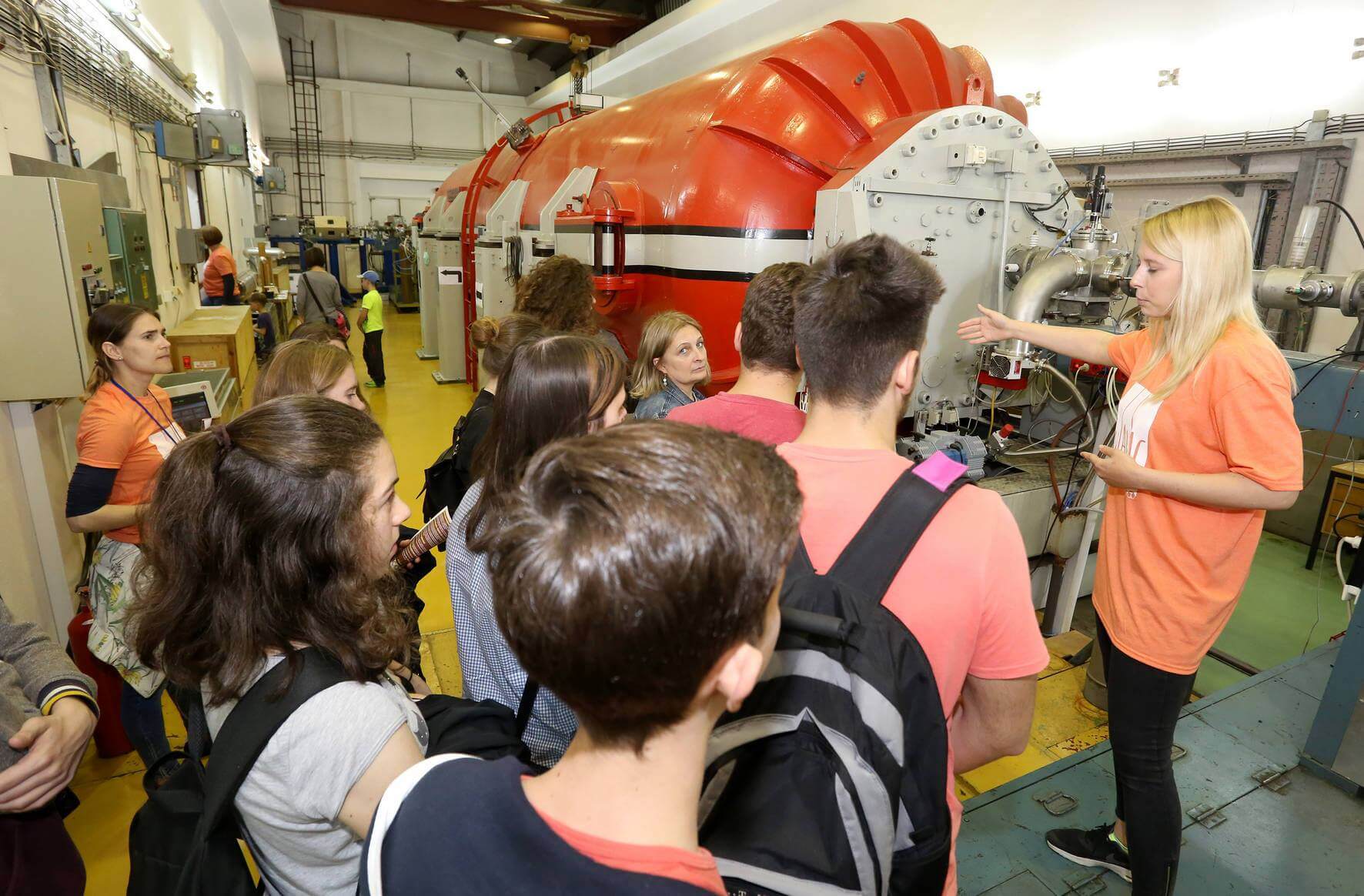Ionic Liquids With Solid State Nanopores: New Valuable Progress From Ruđer Bošković Institute (IRB)
May 28, 2021 - A recently published study on ionic liquids with solid state nanopores at the Ruđer Bošković Institute (IRB) can help the energy storage sector.
The top scientific and research institution in Croatia, the Ruđer Bošković Institute (IRB), continues to be the home of interesting scientific progress.
Researchers from the IRB's computer bioscience team, Nataša Vučemilović-Alagić, and dr. Mario Špadina under the mentorship of dr. Ana Sunčana Smith cleared the phenomenon of transport inside liquids on the principle of nanopores in the solid-state. A nanopore is a small cavity in solid matter, invisible to the naked eye. This IRB research was done in collaboration with dr. Sanjin Marion and dr. Aleksandra Rađenović from École Polytechnique fédérale de Lausanne (EPFL) in Switzerland and the research results are published in the prestigious scientific journal Small which specializes in nanotechnology.
Professor Ana Sunčana Smith's IRB team deals with molecular descriptions of chemical and physical interactions of ionic liquids (liquids that are not neutral but have either positive or negative electric charge) on various solid surfaces. The goal was to determine the impact of specific ions and specific surfaces. The appliance of this knowledge is in line with guidelines of the EU Green Deal, and the UN sustainable development goals", explained IRB in the official press release.
The press release added this knowledge is useful in storing energy, as ionic liquids in nanopores represent an alternative to batteries.
„In this research, starting from the principle of water solutions, we combine ionic fluids and nanopores of different geometric features and materials to secure new nanofluid functionalities. This solves some of the relevant issues in the understanding of basic principles of transports in space-limited ionic liquids and ensuring better control of the speed of translocating within an analyte“, explained Dr. Ana Sunčana Smith.
It's worth noting that dr. Sunčana Smith is one of the Croatian scientists that received support from the Croatian European Research Council (ERC) for a very prestigious project in researching biological membranes worth 1,5 million euros.
Energy efficiency is something IRB shows to be really dedicated to, as evident by the progress IRB researchers made in exploring materials for converting CO2 to methanol alcohol, and IRB's Rovinj Sea Research Centre that celebrated 130 years of existence this year priorities maritime ecology and its protection in its research.
Learn more about Croatian inventions & discoveries: from Tesla to Rimac on our TC page.
For more about science in Croatia, follow TCN's dedicated page.
Rovinj Sea Research Centre Celebrating 130 Years of Work
May 18, 2021 - The Rovinj Sea Research Centre turns 130 in 2021. It is the place in Croatia for oceanographic research and all things science related to the preservation of the sea and maritime life.
Established back in 1891 as Berlin's Aquarium Zoological Station, the research Institute is known today as the Rovinj Sea Research Centre (CIM), and last week it celebrated 130 years of work. An affiliate of the Ruđer Bošković Science Institute (IRB), that institute recently reported that CIM currently has 54 employees working in four laboratories, and the centre is heavily involved in numerous impressive scientific projects.
''This includes five projects of the Croatian Science Foundation (HrZZ), worth 5,855 635 HRK, three projects financed within the INTERREG cross border programme (worth 1,326 000 euros), three projects with European structural and investment funds (7,189 531 HRK), and two projects financed within the EU programme for research and innovations, OBZOR 2020, valued at 179,360 euros,“ says the IRB official website.
The section of the IRB page dedicated to CIM adds that the centre offers a multidisciplinary take on the research of the sea, offering both basic and applicable oceanographic research. This includes six areas of interest: processes and dynamics in the food chain, examining the dynamics of water masses, ecology (species and the interrelations of species in both clean and in polluted waters), sea organism research (ecological, physiological, and genetic features of organisms, and a pollution effects study), the monitoring of pollution and sea quality, and finally, the monitoring of eutrophication (a process in which the environment becomes enriched with nutrients which can trigger the development of algae and cause an imbalance in the ecosystem).
Set in the beautiful town of Rovinj on the Istrian peninsula because of the clear waters of the Adriatic sea, CIM is on a mission to preserve marine life and its biodiversity.
CIM truly has a rich tradition, having conducted international systematic research and monitoring of the marine ecosystem of the Northern Adriatic for over 30 years. ''This approach became a model for the regional organisation of the European systematic monitoring of the coastal sea,'' says IRB.
IRB adds that in this long tradition, the Croatian science programme of monitoring the Northern Adriatic played a huge role. Having begun fifty years ago, it developed into the Jadran Project, making Croatia one of the first countries in all of Europe to have developed a systematic approach to the monitoring of the sea.
''Additional confirmation of the tradition and scientific quality of CIM can also be seen in the recent joining of CIM to JERICO – the Joint European Research Infrastructure network for Coastal Observatory, making CIM a partner of some of the most famous European Institutes“, concluded the IRB's explanation.
Learn more about Beaches in Croatia on our TC page.
For more about science in Croatia, follow TCN's dedicated page.
Ruđer Bošković Institute (IRB) Open Doors in 2021: Virtual Event To Present Science to Public in May
May 15, 2021 -The Ruđer Bošković Institute of Science (IRB), the top science facility in Croatia, is hosting a public event. Despite the event being online, the educational and entertaining side of the 17-year-old manifestation won't go amiss.
With the pandemic still causing havoc, events happen either with a limited number of visitors or in the virtual world. And with Ruđer Bošković Science Institute (IRB) being both socially responsible and brilliant in using modern technologies in the best possible matter - chose the latter. The doors of the Ruđer Bošković Science Insitute, from May 18th until May 22nd, unlike previous years, will not be as open as they were before for the public, but the scientific platforms which will be launched on the ODI2021 website aim to ensure an educational and fun experience.
The doors will be open to ''children of all ages, their parents, teachers, students, professors and everyone with a curious and open mind and an adventurous spirit“, IRB stated, welcoming people to join the platform in the description of their Facebook event announcement.
All the content will be available on social media under the following hashtags: #odi2021hibrid, #odi2021, and #istraziplatforme.
Additionally, you can follow the event on Youtube, Instagram, and Twitter.

Ruđer Bošković, painted by R. Edge Pine in London, 1760 © public domain
The Ruđer Bošković Institute is named after Ruđer Bošković, a famous Croatian scientist and philosopher (May 18, 1711, in Dubrovnik - February 13, 1787, in Milan).
The online edition of the Croatian Encyclopedia describes Ruđer Bošković as a universal mind that enrolled in various branches of science, was an excellent mathematician, and even a writer, and a poet who also dealt with practical problems such as swamp drainages and more.
''Bošković was the first person in the history of science to introduce the method of the equation of measurement by setting up two conditions that P.S Laplace later explained in a mathematical form, which is why it's called Laplace's method (in recent times it has been referred to as the Bošković.Laplace method)“, according to the Croatian Encyclopedia.
As Biografija.hr states, the IRB Institute was established back in 1950 and was originally focused on atomic physics. Today, however, IRB is the largest scientific research institution in all of Croatia.
''With its size, scientific productivity, international recognition in research, and the quality of scientific personnel and research equipment, it's the leading scientific institution for nature and biomedical sciences, as well as in the research of the sea and the environment“, says the IRB website.

© Ratko Mavar / Institut Ruđer Bošković
The aforementioned success and recognition saw the Ruđer Bošković Institute's open door day, which has been being held since back in 2004, and attracts huge public attention. Three thousand people attended the event back in 2019, making it an excellent opportunity to popularise and introduce science to people of all ages, in the hope society will appreciate scientists' hard work more on the one hand, and attract new generations to pursue scientific or research careers on the other.
Learn more about Croatian inventions & discoveries: from Tesla to Rimac on our TC page.
For more about science in Croatia, follow TCN's dedicated page.


